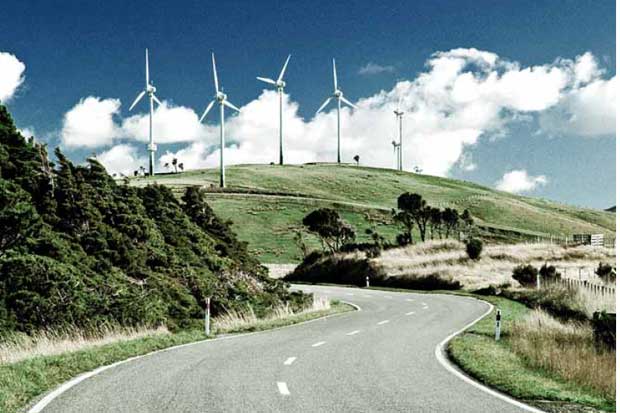As Australia’s renewable energy sector floundered through 2014, investment in the global industry grew by 17 per cent, according to a report released yesterday from the United Nations Environment Program (UNEP).
While moves from the Abbott government to cut the Renewable Energy Target (RET) caused investment in large-scale renewables to plummet by 88 per cent last year, and drove an overall drop off of 35 per cent, global investment grew by $270 billion.
The UNEP report adds weight to the Climate Council’s assertions, detailed in a separate report earlier this week, that Australia is missing out on a global boom.
On the world stage, renewables made up nearly half of net growth in power capacity last year and the $270 billion of investment added 103 gigawatts (GW) of generation capacity world-wide, which UNEP said is equal to all 158 nuclear reactors in the USA.
"These climate-friendly energy technologies are now an indispensable component of the global energy mix,” the group’s Executive Director, Achim Steiner, said.
“Their importance will only increase as markets mature, technology prices continue to fall and the need to rein in carbon emissions becomes ever more urgent,” he said.
Figures from the UNEP report show that investors are getting much greater bang for their buck as technology improves.
In 2011, investment across the globe was at a record high of $279 billion, but the amount of power generated was lower, at 81GW. Conversely, investment last year was slightly lower, at $270 billion, but power generation was significantly higher, at 103GW.
The main gains in technology were in solar and wind, which attracted 92 per cent of total investment in renewables, UNEP said.
Earlier this month, a separate Climate Council report detailed “how Australia is missing out” on the global boom.
Australia is especially suited to adopt solar and wind technologies, and has the potential to generate 500 times more power from than we do now, solely from renewables, the report said.
The cost of solar module photovoltaic technologies, according to the report, dropped 75 per cent between 2009 and 2014 and is expected to fall a further 45 per cent over the next five years.
Wind technologies reportedly dropped by 14 per cent over the 2009-2014 period.

The rapid reduction in the cost of these technologies is reflected in their global uptake, the UNEP report shows. Solar had the sunniest outlook in 2014, with investment jumping 25 per cent to $149 billion, while wind investment increased 11 per cent to a record $99.5 billion.
China outstripped other nations in taking advantage of these increasingly cost-competitive prices, with the UNEP report recording $83 billion in investment in renewable energy in 2014, equating to a 39 per cent increase on 2013 figures.
North America, which today announced a binding emissions reduction target of at least 26 per cent on 2000 figures by 2025 ahead of the Paris climate talks later this year, came in second, with a seven per cent increase in investment, up to $38 billion.
Japan had the third largest investment, its highest ever, at $35 billion.
However, the Climate Council report notes that “in Australia, federal government threats to wind back the Renewable Energy Target, multiple reviews of that target, and on-going debate, has substantially undermined investor confidence”.
Since 2013, Australia has slipped from being ranked in the top four most attractive places to invest in renewable energy, to the 10th.
Negotiations over the RET – which Labor, the Greens and industry groups had hoped to finish up by no later than yesterday because of substantial liabilities borne by emissions intensive industries under the scheme – are continuing, with the government seemingly unwilling to compromise on its preferred target of 32,000 Gigawatt Hours (GWh).
The target – which represents the amount of total energy demand to be drawn from renewable sources – was legislated at 41,000GWh in 2009, but has been under a cloud since the government appointed self-professed climate sceptic Dick Warburton to review it in February 2014.
After more than a year of uncertainty, the industry’s peak body, the Clean Energy Council, is calling on the government to break the stalemate and ‘meet it half way’ at a target of 33,500GWh.
"While this compromise represents more than a 30 per cent cut to the amount of new renewable energy required,” CEO Kane Thornton said, “accepting this package can quickly unlock over $10 billion of new investment”.
She said a compromise of 33,500GWh would “protect the 21,000 jobs in the sector and create more than 6,000 new jobs around the country from large-scale renewable projects”.
“We are calling on both major parties to show leadership and to compromise, providing a future for the renewable energy industry in Australia and unlock the massive economic potential of the sector,” Thornton said.
Donate To New Matilda
New Matilda is a small, independent media outlet. We survive through reader contributions, and never losing a lawsuit. If you got something from this article, giving something back helps us to continue speaking truth to power. Every little bit counts.



